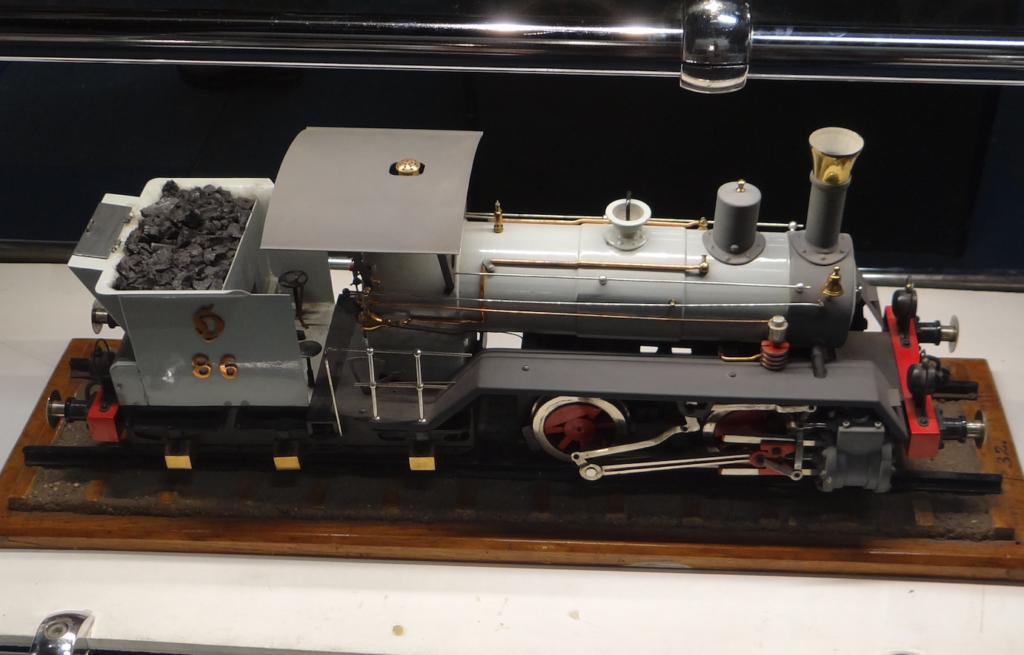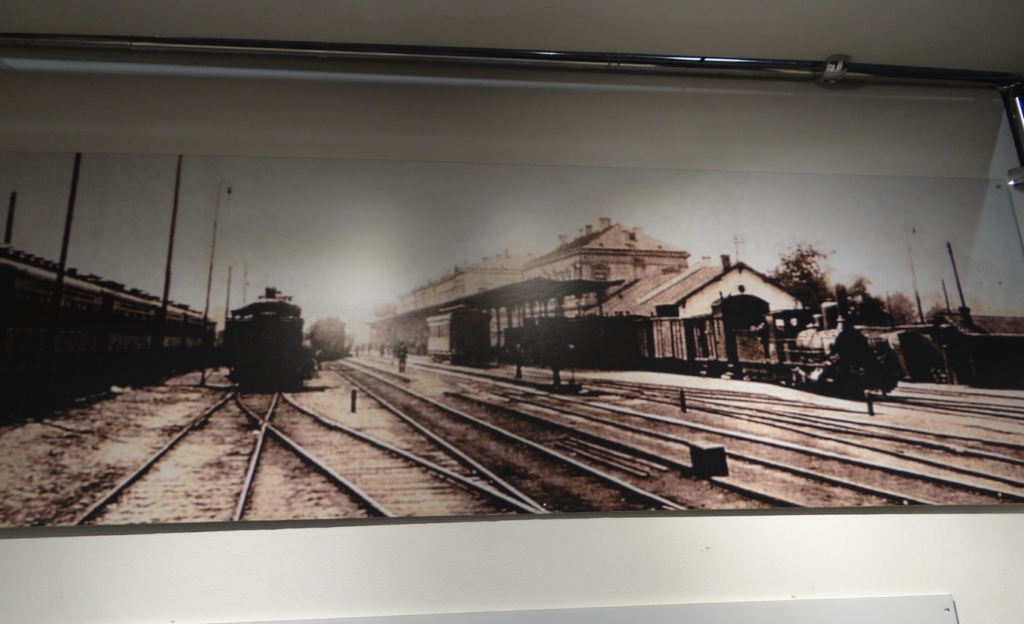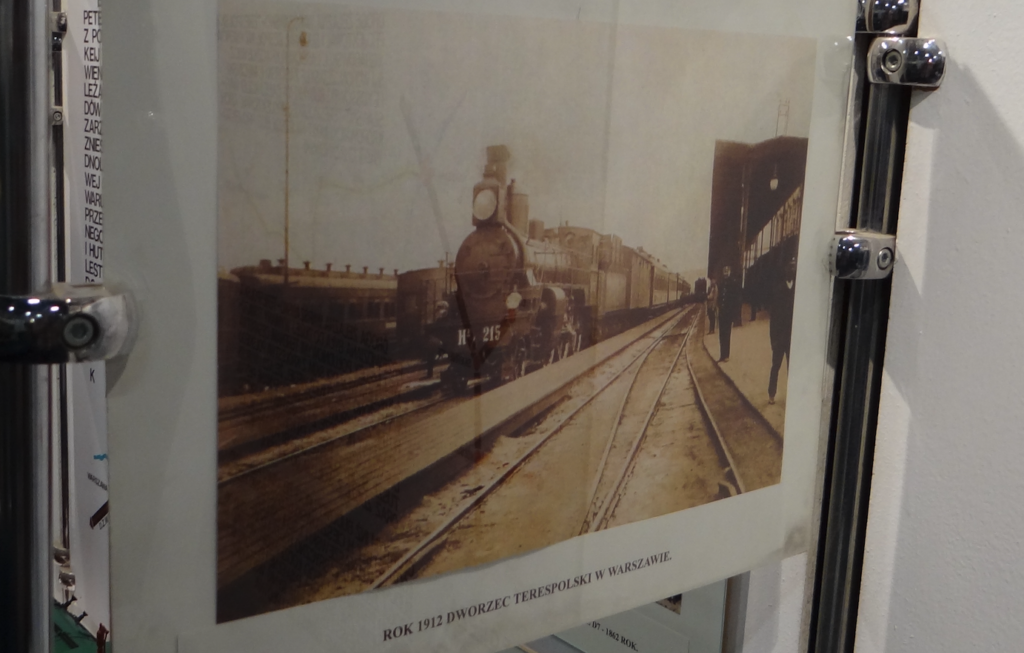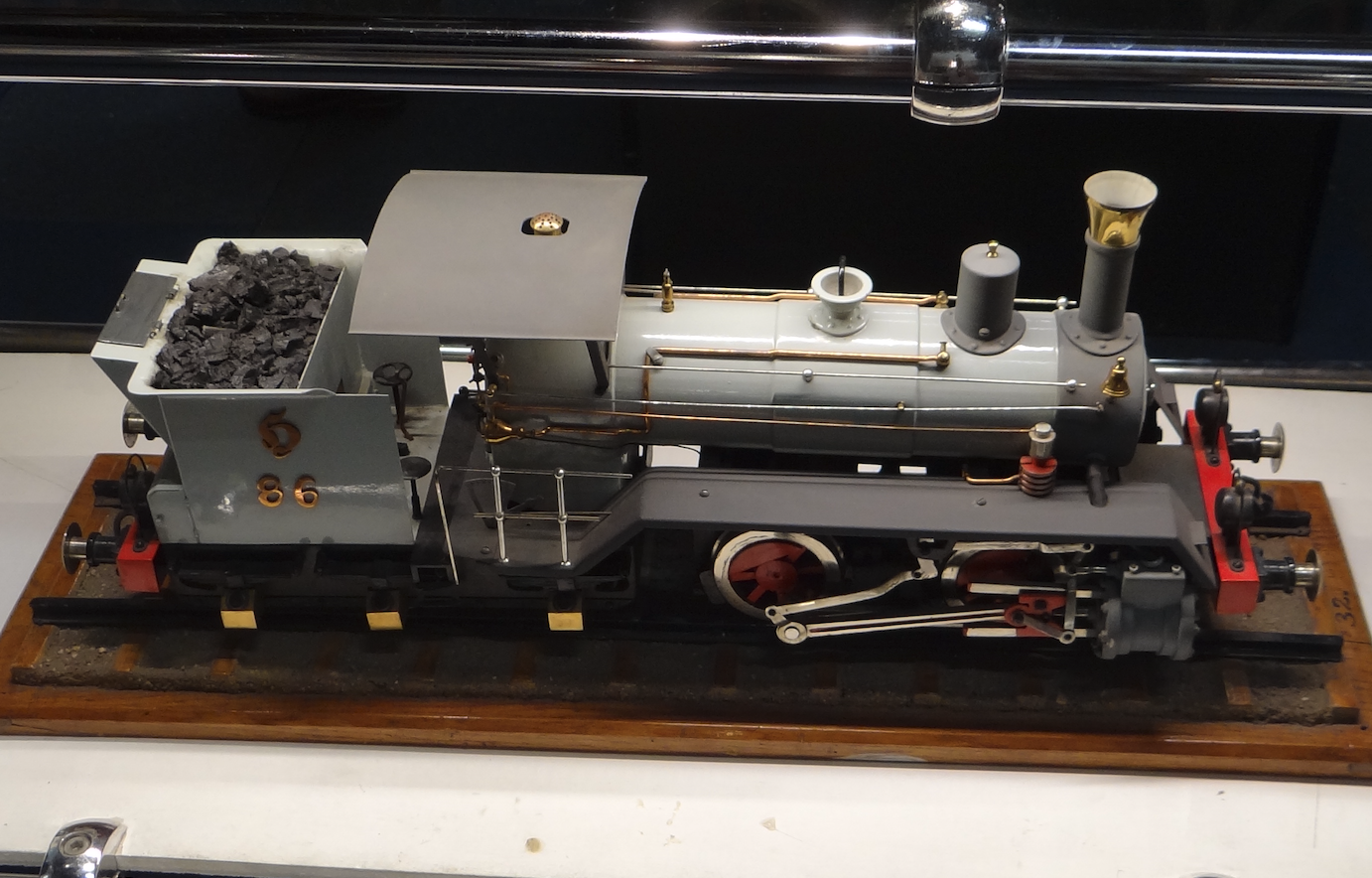Warszawa 2025-02-11
Warsaw-Terespol Railway.



The Warsaw-Terespol Railway (in Russian Варшавско-Тереспольская железная дорога) was established in the period 1865-1867, thanks to the initiative of the Warsaw entrepreneur and banker, Leopold Kronenberg (1812-1878). These were difficult times, just after the fall of the January Uprising. It was – after the Warsaw-Vienna Railway and the Warsaw-St. Petersburg Railway – the third railway line to be built in the Kingdom of Poland, i.e. during the partitions. Polish railway investments undertaken by Polish entrepreneurs, in the absence of statehood, were to be subordinated to the military, political and economic goals of the invaders: Muscovites, Germans and Austro-Hungarians. Importantly, the Muscovites did not agree to the construction of a route in the European gauge (1435 mm) for military reasons. They ordered the construction of tracks with a rail gauge of 1524 mm.
It is assumed that the first railway line in the world was opened in the UK on September 27, 1825. Although horse traction had been in operation earlier. In the period 1844-1848, the Warsaw-Vienna Railway was launched. In the period 1860-1862, the Warsaw-St. Petersburg Railway was launched. It should be noted that these projects were hindered by the Muscovites, just as currently (2025), the Central Communication Port (CPK) projects are being hindered by the Volksdeutsche, communists and freemasons.
The location of Warsaw on important trade routes; east-west and north-south, had to lead to the connection of two railway systems; the European and the Moscow broad-gauge. As a result, initially two, and soon four, independent main railway stations were built in Warsaw. Warsaw Wiedeńska (Marszałkowska Street and Alej Jerozolimskie) on the western bank of the Vistula and on the eastern bank of the Vistula; Petersburski Station (later Wileński), Terespolski Station (currently Warszawa Wschodnia) and Nadwiślański Station in Pelcowizna. The transport connection between these stations took place in 1864, when the Kierbedzia Bridge over the Vistula, with a horse tram line, was put into use. In 1876, the so-called Circumferential Railway was launched, with a railway bridge at the Citadel, which connected the railways on both sides of the Vistula.
The history of the Terespolska Railway dates back to 1864, when banker Leopold Kronenberg (1812-1878) obtained a Tsar’s concession and established the Warsaw-Terespol Railway Company. He turned to foreign companies for help and eventually cooperation was established with the English Company of Karol Vignoles and Thomas Brassey (1805-1870). They developed technical documentation, managed earthworks, managed the construction of bridges, road-rail crossings, embankments and excavations. They supplied rails, sleepers, switches, electric telegraph equipment, as well as rolling stock. The physical work was carried out by Warsaw companies; Henryk Reichman and Emanuel Wolff. The Polish side was responsible for erecting buildings at the stations and passenger stops, along with earthworks, installing station equipment, constructing workshops and locomotive sheds at Praga station, purchasing steam locomotives and wagons.
The construction of the Terespolska Railway also involved the well-known Warsaw plants “Lilpop, Rau and Loewenstein”. Founded in 1866 by Stanisław Lilpop (1817-1866) and Wilhelm Elis Rau (1825-1899), who were joined in 1868 by the Belgian industrialist Baron Seweryn Loewenstein. These plants produced steel rails, machines and means of transport, including railway and tram wagons. Workshop machines and station equipment for the Terespolska Railway were also produced at the Warsaw Steam Navigation Machine Factory of Count Andrzej Zamoyski in Solec.
Work on the Terespolska Railway began in the spring of 1865. Embankments and ravines were prepared and rails were laid from the Praga side. Construction of railway stations was also started according to the designs of the architect Alfons Ferdynand Kropiwnicki (1803-1881), who headed the architectural department of the construction of the Terespolska Railway. He cooperated with Witold Lanci, Andrzej Rajkowski, Kazimierz Granzow, Henryk Reichman and Emanuel Wolff. The creator of the Warsaw-Terespolska Railway, Leopold Kronenberg (1812-1878), was personally involved in every stage of designing railway stations and bridges. Through Józef Ignacy Kraszewski, who was in Dresden, he imported plans of railway station buildings from Germany, which were to serve as models and typical for buildings designed in the Warsaw office by Alfons Ferdynand Kropiwnicki. All railway station buildings were completed in the period 1866-1867.
Alfons Ferdynand Kropiwnicki, after studying at the Faculty of Fine Arts at the University of Warsaw, obtained a construction license in the Kingdom of Poland in 1826, and in 1843, became the chief construction engineer of the city of Warsaw. He collaborated with Antonio Corazzi on the construction of the Grand Theatre. Among many projects from Warsaw, the unpreserved Terespol Railway Station in Praga, built in 1866-1867, stood out for its scale and richness of detail. Its architecture referred stylistically to the palace-villa forms of the Italian Neo-Renaissance, similarly to other railway stations in the Kingdom of Poland from that period. The remaining station buildings, which were built along the Terespolska railway line, were smaller and more modestly equipped, but had a certain standard. They were realized in the style of a simple brick form with simplified arcade details to reduce costs. The elevations were made of burnt brick and were characterized by simple divisions, emphasizing the layout of the rooms, and the window and door openings received semicircular or arched closures in the upper part. The solid construction was characterized by the lack of a large number of architectural details. All the stations were built on the plan of an elongated rectangle, in a single-storey or two-storey version, with seven- or five-axis elevations. The body of the building is diversified only by the projections, which were placed either centrally or on the sides, which were topped with a triangular gable. The stations in Mrozy (two-storey), Kotuń (one-storey) and Międzyrzec Podlaski (also two-storey), preserved to this day, together with Alfons Ferdynand Kropiwnicki’s own palace in Zielonki near Warsaw, are the only works of the architect that survived after World War II. Therefore, photographs taken in 1866 by Maksymilian Fajans, showing the construction stage of the Praga, Mrozy, Kotuń stations; have exceptional historical value.
The Warsaw-Terespol Railway was built in two stages. The first section, from Praga station to Siedlce, was put into service on October 9, 1866. On this route, station buildings were erected in the following towns: Warsaw-Praga, Miłosna, Mińsk Mazowiecki, Mrozy, Kotuń, Siedlce. In addition to the main stations, modest passenger stops, then called substations, were built in Demb Wielki, Szaniawy and Rembertów.
The cornerstone laying ceremony in Prague took place on May 30, 1866. The second section of the route, leading to Terespol, was officially opened on September 17, 1867. This section was serviced by stations in Łuków, Międzyrzec Podlaski, Biała Podlaska, Chotyłów and Terespol. In 1871, a railway connection was established from Terespol to Brest. The station in Brest was built by Muscovites. Then the route through the stations of Baranowicze and Mińsk reached Moscow.
In total, fourteen brick station buildings were built on the route from Warsaw to Terespol. In their original, basically 19th-century form, only the stations in Mrozy (two-story) and Kotuń (single-story) have survived to this day. On the route between Siedlce and Terespol, the station in Międzyrzec Podlaski has preserved its historical appearance.
Leopold Kronenberg, as the chairman of the Management Board of the entire investment, exercised the right to fill positions on the railway according to his own knowledge and discretion. He entrusted them to true professionals, Poles, who were sometimes subjected to repression after the fall of the January Uprising, also returning from exile in Siberia. It was not without reason that at that time, the Terespolska railway was called the “Siberian railway”. After Leopold Kronenberg’s death in 1878, the chairmanship of the Warsaw-Terespolska Railway Company was taken over by his sons: first Stanisław until 1887, and then Leopold Julian until 1891, when the Terespolska railway was taken over by the Moscow state.
The Kronenbergs were outstanding representatives of the Warsaw bourgeoisie, deriving income from banking, trade and industry (railways and coal mining). They actively participated in the work of important Warsaw institutions. Leopold Kronenberg founded – with the participation of the financial and aristocratic-intelligentsia circles of Warsaw and famous Moscow dignitaries – the Commercial Bank in Warsaw. It was Leopold Kronenberg who appointed engineer Tadeusz Chrzanowski (1822-1892) as the main manager of the railway, and this was a real distinction. The nomination took place in 1866.
Stanisław Kierbedź was the bridge builder. In the period 1868-1869, under his management, an iron bridge was built over the Bug River. Then, in the period 1873-1875, he designed and built a steel rail-road bridge in Warsaw near the Citadel, connecting the rail network of the right and left banks of the Vistula. At the same time, he built the so-called Circumferential Railway. This railway operated on a 12 km section between the Vienna Railway Station on Aleje Jerozolimskie and the Petersburg and Terespol railway stations in Praga.
The organizational structure and administration were modeled on the Warsaw-Vienna Railway. In the period 1866-1868, the Warsaw-Terespol Railway employed 590 people. In the following years, this number systematically increased and in 1878, it already amounted to 1,504 employees. In 1868, in addition to the Praga station complex, a brick residential building for railway families was also built. The safety of passengers and transported goods was ensured by the railway police service and the traditional police. Station masters, engineers, workshop managers, telephone operators, mechanics, machinists and stationmasters were exempt from military service for the entire period of employment on the railway. This resulted from the military importance of the Warsaw-Terespol Railway and it was subordinate to the imperial policy of the Muscovite state. Soldiers and recruits, equipment and weapons were transported by rail. It is also worth emphasizing the transit nature of the Terespol Railway, which connected the industrialized Western Europe with the Muscovite state, with a raw material and agricultural-breeding economy. Reports have been preserved informing about the range of goods transported by this railway. Thus, industrial goods were transported towards Terespol and Brest, such as: cotton, sugar, paints, agricultural machinery, iron products, iron and galvanized sheet metal, rails, paper, books, wool, cloth, raw materials (zinc, salt, coal). Agricultural and food goods were transported towards Warsaw, such as: peas, tallow, eggs, flour, groats, flax, hemp, leather, wool, grain, cattle, pigs, wood, charcoal. The number of people travelling on the Warsaw-Terespol Railway reached 500,000 per year.
Specialized rolling stock was needed to transport people and goods. In 1868, it consisted of 20 steam locomotives, 34 passenger cars of various classes, 8 brankards (for transporting luggage and mail), 102 covered wagons, 48 platforms, 6 open wagons for transporting cattle, 2 wagons for transporting poultry, 1 wagon for transporting racehorses, 30 iron wagons (coal wagons), 20 for transporting timber, 70 for gravel. In 1867, 2 more steam locomotives and 74 wagons were purchased. Steam locomotives and wagons for gravel, stones and firewood were purchased from the English company Vignoles and Brassey, contractors of the Warsaw-Terespol Railway. The remaining rolling stock, spare parts and tools came from the Germanic Reutz, Wohler and Krupp factories in Essen, from the Berlin factory and the Lauenstein factory in Hamburg. High-power steam locomotives were brought from the renowned Georg Sigl (1811-1887) factories in Vienna. An electric telegraph with Morse code devices was installed along the railway line at all stations, as well as a bell telegraph. 193 watchtowers were built for the crossing guards who supervised the train traffic (114 brick and 62 wooden, which were covered with sheet metal). Water was also provided for the steam locomotives at individual stations; Praga, Miłosna, Dembe and Kotuń had their own wells. Mińsk, Łuków, Międzyrzec had special pools. Siedlce, Biała and Terespol drew water from the rivers flowing nearby. The Terespol Railway had seven locomotive sheds. Mainly in the 1B axle configuration, with 3-axle tenders. In Praga, two locomotive sheds could accommodate 26 steam locomotives, in Mrozy and Łuków they could accommodate 2 steam locomotives each, in Biała 1 steam locomotive, and in Terespol 4 steam locomotives. The railway was serviced by its own workshops, located next to the Terespol station in Praga, where repairs were carried out on steam locomotives, wagons, traffic equipment and road tools. Mechanical workshops and carpentry shops eventually began producing their own wagons.
The Warsaw-Terespol Railway line runs latitudinally, except for the middle section Siedlce – Łuków, which is meridional. The line is currently 214.227 km long. In Terespol, the line connects with the Moscow-Brest Railway. In 1873, the Brest-Kiev railway connection was opened in Brest. All three of the above-mentioned lines had a wide gauge; 1524 mm. At that time, in Warsaw, in Praga, the Warsaw-Terespol Railway was connected with the Warsaw-Petersburg Railway.
The Terespol Station was located near Brzeska Street, now Kijowska Street. At that time, these were the suburbs of Praga. Later, the station was renamed Brzeski Station, and now it is the Warsaw East Station.
The Warsaw-Terespol Railway was 190 versts long. It runs through Mińsk Mazowiecki near Kałuszyn, Siedlce, turns south to Łuków, then Międzyrzec, Biała and reaches Terespol. Most of the route runs through plains and descends only before crossing rivers and rises again. These are small rivers; Kostrzyn, Muchawka, Zbuczyn, Żelazna and other smaller watercourses. Throughout the entire length of the route, the then standards of slopes, elevations and arcs for the railway lines of that time are not exceeded. The bridges built are small, except for the bridge over the Bug River. All bridge spans were built of sheet metal and supported on brick abutments. The line used Vignola system rails, the latest design, heavy; weighing 25 Russian pounds per foot.
The ceremonial launch of the Warsaw-Terespol Railway line took place on September 27, 1866. In 1881, the Warsaw-Terespol Railway was taken over by the Muscovite state. A side effect of this decision was the Russification of the railways and the gradual removal of the Polish language from timetables. Then, there was an exchange of employees who did not speak Russian. In 1896, the Warsaw-Terespol Railway was connected to the Vistula Railway, the fourth railway line in the Kingdom of Poland. During the Great World War, during the German occupation, the tracks of all lines were converted to standard gauge. In 1918, the Republic of Poland was reborn and all railway lines were incorporated into the Polish State Railways (PKP). The current (2025) route of the line coincides with the Warsaw West – Terespol Railway Line. No. 2.
LK No. 2 has a total length of 214.227 km. The individual sections were launched: Siedlce October 9, 1866, Łuków December 1, 1866, Międzyrzec June 1, 1867, Biała July 10, 1867, Terespol September 17, 1867.
Railway Line No. 2 Warszawa Zachodnia – Terespol is electrified, double-track and is a part of the international railway line E20. The line is electrified with 3 kV current. Currently, the line is adapted to a speed of 160 km/h for passenger trains and 120 km/h for freight trains on the Warszawa Rembertów – Biała Podlaska section (on approximately 80% of the route). In 2016, a tender was announced for the adaptation of the Biała Podlaska – State Border section to the above-mentioned parameters.
Written by Karol Placha Hetman
